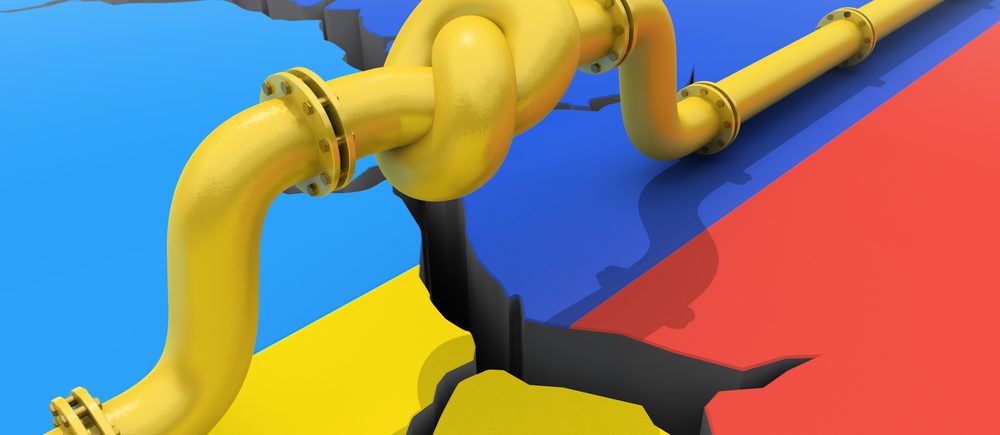The idea of an EU tariff on oil imports from Russia comes from the United States, which is considering proposing that European countries impose a tariff instead of an embargo, to allay concerns about the security of supply and surging oil prices. The EU could combine tariffs and embargoes, US Treasury Secretary Janet Yellen said on Tuesday after discussing ways to reduce EU dependence on Russian energy with European Commission President Ursula von der Leyen.
This week also, the European Union revealed that the bloc intends to mobilize up to €300 billion ($316 billion) by 2030 to become independent of Russian energy imports according to statements by European Commission President Ursula von der Leyen.
“We must now reduce as rapidly as possible our reliance on Russia in energy. We can,” von der Leyen said in a speech in Brussels, on Wednesday, presenting the EU’s plan to break away from Russian energy imports. The invasion of Ukraine by Russia, Europe’s largest gas supplier, has prompted the European Union to reconsider and reevaluate its energy policy.
Russia supplies 40% of the EU’s gas and 27% of its imported oil. Russia has already cut off EU member states Poland and Bulgaria after they refused to pay for natural gas in rubles. An EU ban on coal from Russia is scheduled to come into effect in August, and the bloc has said it will try to cut demand for Russian gas by two-thirds by the end of the year.
However, EU countries are still struggling to agree sanctions on Russian oil, as Hungary and other landlocked countries oppose the move amid concerns about the costs of switching to alternative sources.
To reduce dependence on Russian fossil fuels, Brussels is offering a three-pronged plan including a shift to importing more non-Russian gas, faster adoption of renewable energy, and greater energy-saving efforts. The latest EU measure will help member states to save more energy, accelerate the phasing-out of fossil fuels and kick-start investments on a new scale. This will be speed-charging for the European Green Deal according to von der Leyen.
The European Commission president mentioned energy savings as the quickest and cheapest way to tackle the current energy crisis. According to von der Leyen, the EU energy efficiency target for 2030 will be increased from 9% to 13%, and the 2030 target for EU renewable energy from 40% to 45%. On the supply side, von der Leyen underscored diversifying energy imports away from fossil fuels and accelerating the clean energy transition. The EU 27 government leaders agreed to set up a platform for the joint purchase of gas, LNG and hydrogen, she said.
The REPowerEU plan will cost up to €300 billion ($316 billion). According to von der Leyen, the sum will include approximately €72 billion ($76 billion) in grants and €225 billion in loans. The investments will include up to €10 billion for gas infrastructure, such as missing links between member states and LNG terminals.
Up to €2 billion will be invested in oil infrastructure with a view to stopping the shipment of Russian oil. All the rest of the financing will go into speeding and scaling up the clean energy transition, von der Leyen said.
The EU will not reach a unanimous decision on levying a tariff on Russian crude oil. Strong opposition from Hungary is the major obstacle. At a meeting this week, the EU foreign ministers failed to persuade Hungary to drop its veto on an embargo. Essentially, an EU-wide agreement on a tariff is difficult to reach as a phased oil embargo proves to be currently amid strong opposition from Hungary.
Up till now, an EU official said on Friday “There’s no way for us under common commercial policy to just increase the tariffs. We need to abide by the rules”. “It would be sanctions, not something that falls under commercial policy,” an official told Argus, commenting on the possibility of a tariff on Russian oil.
Under sanctions, not commercial policy, a tariff will also need unanimous approval from all 27 EU member states, including Hungary, as is the case with the proposed oil embargo on Russian crude and refined products.
In early May, the European Commission officially proposed a full ban on Russian crude and oil product imports, to come into effect by the end of 2022. But the EU is still motocross to find a common stance, trying to persuade Hungary and some other central as well as eastern European countries to drop their opposition to an embargo.
At a meeting on Monday, the foreign ministers of the EU failed to persuade Hungary to drop its veto on an embargo. Diplomats hope that a summit at the end of May could reach a unanimous decision on a ban on Russian oil, to be phased out over six months and with exemptions for central European countries including Hungary, Slovakia, and the Czech Republic.
It seems that Hungary’s Orban keeps EU guessing over Russian oil embargo. Europe attempts to address Budapest’s concerns, but disputes with the prime minister are clouding sanctions talks. As Europe races to wean itself from Russian energy, American natural-gas producers are struggling to meet the demand and prices are surging. Factors including extreme weather and equipment needs have created a bottleneck amid the ongoing war in Ukraine.
On the European stage, Hungary’s Prime Minister Viktor Orban became the last barrier to a sweeping embargo against Russian oil, hindering the European Union’s biggest attempt so far to starve the Kremlin’s war machine on the grounds that it would devastate his small nation’s economy.
Back home, Hungary’s largest energy firm, MOL, which is partly government-owned, has been quietly accelerating efforts to import oil from other countries. Within as little as two years, the Duna oil refinery, the country’s biggest, could be set up to run entirely on non-Russian oil according to MOL sources.
The US dollar on Friday, hitting levels last seen in March 2018, boosted by capital controls and domestic tax payments that usually lead to increased demand for the currency. The ruble has firmed by nearly 30% so far this year, despite a full-scale economic crisis, becoming the best-performing currency, artificially supported by controls imposed in late February to shield Russia’s financial sector after it sent tens of thousands of troops into Ukraine.
The ruble was at 58.90 against the dollar in volatile trade on the Moscow Exchange, after hitting 57.0750, a level last seen in late March 2018. Against the euro, the ruble firmed by more than 5% to 60.86 after touching 59.02, its highest since June 2015.
The ruble is driven by export-focused companies that are obliged to convert their foreign currency revenue after Western sanctions froze nearly half of Russia’s gold and forex reserves. Exporters are forced to sell foreign currency and there is no one to buy it.
Preparations for month-end taxes also boost demand for rubles, while demand for dollars and euros remains low due to disrupted imports chains and restrictions on withdrawing foreign currency from bank accounts and moving it out of Russia. The key question is whether the central bank will step in as the excessive ruble firming is not in the finance ministry’s and budget’ plans.
Outside the Moscow Exchange, the ruble remained much weaker. Sberbank, Russia’s largest lender, was selling cash dollars for 67.17 rubles and euros for 69.84 rubles. The stronger ruble helps to put brakes on inflation and is beneficial for importers but hurts exporters who sell goods and services abroad for foreign currency, meaning reduced incomes for Russia’s export-dependent budget.
In a sign that authorities are ready to gradually lift capital controls, the central bank allowed banks to sell citizens foreign currency without any restrictions from May 20, with the exception of US dollars and euros. Meanwhile, Russian stock indexes were mixed on Friday.
The dollar-denominated RTS index jumped 4.8% to 1,305.9 points. The ruble-based MOEX Russian index was 1.3% lower at 2,405.7 points, pressured by the ruble appreciation.

 Noor Trends News, Technical Analysis, Educational Tools and Recommendations
Noor Trends News, Technical Analysis, Educational Tools and Recommendations




